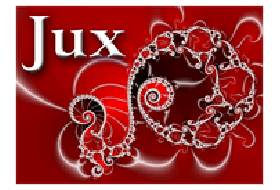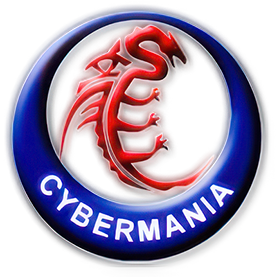
Jux is a fractal explorer for 2D Julia and Mandelbrot sets. It includes a variety of formulas. It has beautiful coloring and lighting effects. It is easy to use. There is no formula editor or scripting.
Features:
• Easy switching between Mandelbrot and Julia sets
• Julia explorer shows Julia set thumbnail corresponding to mouse position in preview
• A selection of formulas, mostly generic with parameters
• Fully multi-core for preview, explorer and rendering
• Render large pictures with full anti-aliasing (when registered)
• Batch rendering (when registered)
• Numeric controls can be dragged like sliders
• 12 steps of undo/redo
• Easily share parameters in social media, with copy/paste to the clipboard
• Memory spots for temporary storage of formulas, coloring or lighting
• Save your favorite settings as presets (formulas, coloring, lighting, gradients)
• Hundreds of system presets included
• One-click switching between 15 default color schemes
• Gradient editor that includes tools to capture linear or randomized gradients
• Coloring based on potential, distance estimate, mean z, basins, textures, fibers, field lines
• Adjust color and lighting controls with realtime preview
• Powerful heightfield lighting effects
• Materials that can include reflection, refraction, angular filtering and displacement mapping
• Use panoramic or ordinary images as environment maps for reflection and refraction
Formulas and navigation
Jux can draw both Julia and Mandelbrot fractals.
- When drawing a Mandelbrot set, you can point the mouse at any part of it and see the corresponding Julia set in the thumbnail
- For Julia sets you can explore variations by moving the mouse relative to the center of the preview
- Shift-click or press J in the preview to switch to the new Julia
- Alt-drag vertically or Ctrl-drag a rectangle in the preview to zoom; pan the preview by dragging it
- Extended precision numbers allow zooming up to 10^16
- Jux automatically finds critical points to correctly render convergent regions in Julia fractals
- For Mandelbrot fractals you can choose which critical points to use
- Choose from a list of built in formulas (there is no formula editor)
- Jux has a good selection of polynomial, rational polynomial and Newton formulas, some Ducks and Kaliset variations, 10 with trig or exp functions, and 11 chaotic formulas
- Most formulas have parameters to cover the range of possibilities. Some include Abs modes.
Here are some examples of different formulas and coloring (without lighting).
Coloring
There are many possible ways to color Mandelbrot/Julia fractals. Jux has built-in methods chosen for their simplicity, flexibility and aesthetics. You can use coloring alone, or modify it with heightfield lighting effects.
- Fractals may be divided into regions, depending on whether the formula converges, diverges or neither when iterated. Each region has its own coloring controls.
- Exterior (divergent) regions can use continuous potential, distance estimation, fibers
- Interior (convergent) regions can use continuous potential, distance estimation, mean |z| or angle, plus field lines and basin variations
- Coloring for the In Set region based on mean |z|, final |z| or angle
- Up to six Orbit Trap regions defined by iterating an adjustable shape (36 to choose from)
- Orbit Traps can use distance, X, Y or angle
- Add textures with a rich variety of patterns, and turbulence to distort them
- All coloring parameters (except Fibers and Orbit Trap trap panel) can update the preview in realtime
- Coloring uses several gradients, with a powerful gradient editor and 1100+ presets included
- Capturing gradients (linear or randomized) from the desktop is easy
- Import gradients from UltraFractal .ugr or Fractint .map files
Lighting
Jux can add lighting effects to bring the fractals into 3D. The fractal is calculated as a height field in a 3D lighting environment.
- Height field contours based on potential, distance estimate or mean z
- Separate height field adjustment for In Set, Exterior, Interior and Orbit Trap regions
- Add displacement from textures, fibers or field lines
- Up to 10 directional light sources plus ambient and fill light
- Environment mapping for reflection and refraction using panoramic or ordinary images, with adjustable field of view
- Use your own images or one of 12 supplied panoramic images
- Material properties independent of light sources and formulas
- Use up to four different materials for regions or sub-regions
- Materials can have a mix of diffuse, highlights, emission, reflection and refraction
- Use gradients to filter the reflected and transmitted light by angle
- Add displacement mapping with a variety of noise or patterns
- All lighting parameters can update the preview in realtime (or near enough)
Here are some examples of lighting with various materials.
Thanks to CRD keygen
(Registered Silent Install Repack) x86
